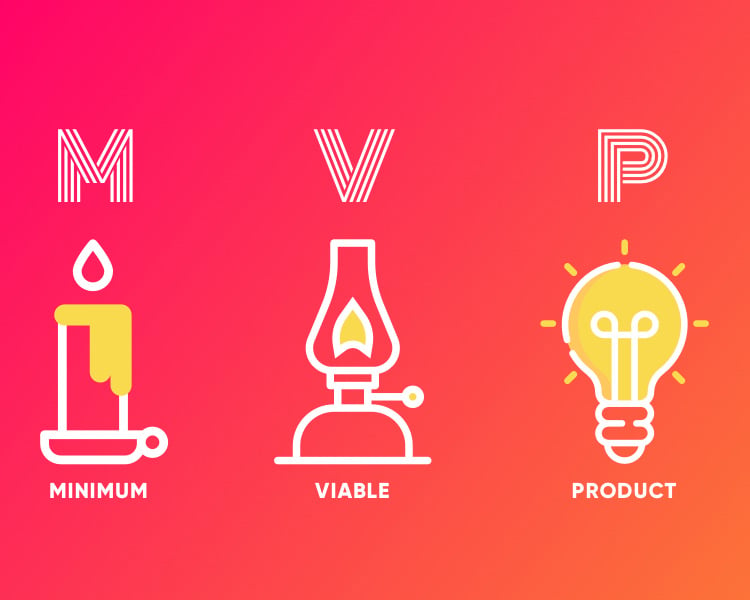Starting a startup with just $100 can be challenging, but with careful planning and resourcefulness, it's still possible to get your venture off the ground. Here's a detailed guide on how to start a startup with a limited budget:
1. Define your idea and business model:Defining your idea and business model is the crucial first step in starting a startup. This is where you identify the problem you want to solve and determine how your business will generate revenue. Here's how you can approach it:
1. Identify a problem or need: Start by brainstorming and researching to identify a problem or a gap in the market that needs addressing. Look for pain points or inefficiencies that potential customers may be facing.
2. Develop a solution: Once you've identified the problem, think about how you can provide a solution. Consider the unique value proposition your product or service can offer and how it can effectively address the problem or need you've identified.
3. Define your target audience: Determine who your ideal customers are. Consider demographics, psychographics, and their specific needs or preferences. This will help you tailor your solution and marketing efforts to effectively reach and engage your target market.
4. Research your competition: Conduct a thorough analysis of your competitors. Understand what they offer, how they position themselves, and what sets you apart. Differentiating your business is essential for success.
5. Choose a business model: Decide how you will generate revenue and sustain your startup. There are various business models to consider, such as selling products or services, subscription-based models, advertising revenue, or a combination of multiple streams. Select a model that aligns with your target market and provides a viable path to profitability.
6. Consider scalability: Assess the scalability potential of your business model. Can it grow rapidly and handle increased demand without significant resource constraints? Scalability is important if you envision your startup expanding in the future.
7. Validate your idea: Before investing further time and money, validate your idea by seeking feedback from potential customers or industry experts. Conduct surveys, interviews, or test your MVP (Minimum Viable Product) to gather insights and make necessary refinements.
Remember, your idea and business model form the foundation of your startup. Spend time refining and honing them to ensure they are viable, valuable, and have the potential for growth.
2. Conduct market research:Market research is a critical step in understanding your target market, competitors, and overall industry landscape. It helps you gather valuable insights that will shape your startup's strategies and decisions. Here's how you can conduct market research:
1. Define your research objectives: Clearly outline what you want to achieve with your market research. Identify the specific questions you need answers to, such as understanding customer preferences, sizing the market opportunity, or assessing competitive landscape.
2. Identify your target market: Determine the specific segment(s) of the market you want to focus on. Consider demographics, geographic location, psychographics, and any other relevant factors that define your ideal customers.
3. Use secondary research: Start by leveraging existing sources of information. Look for industry reports, market studies, government publications, and reputable online sources that provide data and insights related to your industry. This will help you gather a broad understanding of the market, trends, and potential challenges.
4. Conduct primary research: Primary research involves collecting data directly from your target market. There are several methods you can use:
- Surveys: Create online surveys using platforms like Google Forms or SurveyMonkey to gather quantitative data. Craft questions that cover your research objectives and distribute the surveys through social media, email, or targeted online communities.
- Interviews: Conduct one-on-one interviews with potential customers, industry experts, or thought leaders. These interviews can provide qualitative insights and deeper understanding of customer needs, pain points, and preferences.
- Focus groups: Bring together a small group of individuals who represent your target market. Facilitate a discussion to gather insights, feedback, and opinions on your product or service.
5. Analyze and interpret the data: Once you have collected your research data, analyze it to draw meaningful conclusions. Look for patterns, trends, and common themes. Identify key insights that will guide your decision-making process.
6. Assess your competition: Study your competitors to understand their offerings, strengths, weaknesses, and market positioning. Analyze their pricing strategies, marketing tactics, customer reviews, and any unique selling propositions they have. This will help you identify opportunities to differentiate your startup.
7. Stay updated: Market research is an ongoing process. Continuously monitor industry trends, customer behavior, and competitive activities. Subscribe to relevant newsletters, follow industry influencers, and participate in relevant forums or events to stay informed.
By conducting comprehensive market research, you'll gain a deep understanding of your target market and competitive landscape. This knowledge will enable you to make informed decisions, refine your strategies, and position your startup for success.
3. Create a business plan:Creating a business plan is crucial for outlining your startup's objectives, strategies, and financial projections. It provides a roadmap for your business and helps communicate your vision to potential investors or stakeholders. Here are the key components to include in your business plan:
1. Executive Summary:
- Write a concise overview of your business, highlighting its mission, unique value proposition, target market, and key goals. This section should be compelling and capture the reader's attention.
2. Company Description:
- Provide detailed information about your startup, including its legal structure, location, founding team, and history. Explain the problem you are solving and how your solution addresses it.
3. Market Analysis:
- Present a thorough analysis of your target market, industry trends, and customer needs. Include market size, growth potential, and any relevant data or research that supports your understanding of the market.
4. Product or Service:
- Describe your product or service in detail, emphasizing its features, benefits, and unique selling points. Explain how it solves the problem and meets the needs of your target customers. If applicable, outline your intellectual property (IP) strategy.
5. Competitive Analysis:
- Assess your direct and indirect competitors. Identify their strengths, weaknesses, and market positioning. Highlight what sets your business apart and describe your competitive advantage.
6. Marketing and Sales Strategy:
- Outline your marketing and sales approach. Define your target audience and outline your customer acquisition strategy. Include details about your pricing, distribution channels, promotional activities, and customer retention plans.
7. Organization and Management:
- Provide information about your team's background, skills, and roles within the organization. Include an organizational chart and describe the key responsibilities of each team member. If there are any gaps, explain how you plan to fill them.
8. Financial Projections:
- Prepare a financial forecast that includes income statements, cash flow projections, and balance sheets. Estimate your revenue streams, expenses, and profitability over the next three to five years. Include any assumptions made in your projections.
9. Funding Request (if applicable):
- If you are seeking funding, clearly state the amount you need and how you intend to use the funds. Explain your funding strategy, whether through equity investment, loans, grants, or other sources.
10. Risk Assessment:
- Identify the potential risks and challenges your business may face and provide strategies for mitigating them. This could include market risks, regulatory risks, operational risks, or financial risks.
11. Appendix:
- Include any supporting documents or materials that provide additional information about your startup. This may include resumes of key team members, product prototypes, market research data, or legal documents.
Remember, your business plan should be well-organized, concise, and easy to understand. It should demonstrate your understanding of the market, outline your strategies, and showcase the potential for profitability and growth. Continuously update and refine your business plan as your startup evolves.
4. Leverage free resources and tools:When starting a startup with a limited budget, leveraging free resources and tools is a smart strategy to save money and access valuable resources. Here are some free resources and tools you can use:
1. Online Presence and Marketing:
- Create a website: Platforms like WordPress, Wix, or Weebly offer free website templates and hosting options.
- Social media platforms: Utilize free social media platforms like Facebook, Instagram, Twitter, and LinkedIn to build your online presence and engage with your target audience.
- Content creation: Use free tools like Canva for designing graphics, Mailchimp for email marketing, and Hootsuite for social media scheduling.
- Blogging platforms: Start a blog using platforms like Medium or Blogger to share valuable content and attract an audience.
2. Collaboration and Project Management:
- Project management tools: Tools like Trello, Asana, or Notion offer free plans for organizing tasks, collaborating with team members, and tracking progress.
- Communication tools: Use free communication tools like Slack or Microsoft Teams for internal team communication and collaboration.
- Cloud storage: Services like Google Drive, Dropbox, or OneDrive offer free storage options to store and share files with your team.
3. Market Research and Analytics:
- Google Analytics: Gain insights into website traffic, user behavior, and audience demographics using Google Analytics, a free web analytics tool.
- Google Trends: Monitor and analyze the popularity and search volume of specific keywords or topics using Google Trends.
- Survey tools: Platforms like Google Forms or SurveyMonkey provide free options to create surveys and gather feedback from customers or target audience.
4. Learning and Education:
- Online learning platforms: Websites like Coursera, edX, or Khan Academy offer free courses and resources on various topics, including entrepreneurship, marketing, and business development.
- Startup communities and forums: Join online communities like Reddit's r/startups, Quora, or specialized industry forums to connect with like-minded individuals, seek advice, and learn from experienced entrepreneurs.
5. Networking and Events:
- Meetup.com: Explore local networking events and industry-specific meetups on Meetup.com. Many events are free or have minimal attendance fees.
- Webinars and online events: Participate in free webinars, virtual conferences, and workshops to expand your knowledge, network with industry experts, and gain exposure.
6. Mentoring and Support:
- Small Business Development Centers (SBDCs): SBDCs offer free counseling, mentoring, and resources for startups and small businesses.
- Startup incubators and accelerators: Apply to incubator or accelerator programs that provide mentorship, resources, and sometimes even seed funding to early-stage startups.
Remember, while these free resources and tools can be valuable, be mindful of any limitations or additional costs that may come with their free versions. Assess your specific needs and explore the free options that align with your startup's requirements.
5. Focus on your MVP (Minimum Viable Product):Focusing on your Minimum Viable Product (MVP) is crucial when starting a startup with limited funds. An MVP is the most basic version of your product or service that solves the core problem and delivers value to early customers. Here's how you can prioritize and build your MVP:
1. Identify the core features: Determine the essential features that directly address the problem you're solving for your target market. Focus on functionalities that provide the most significant value and differentiate your product or service.
2. Simplify your design: Keep your MVP design simple and user-friendly. Avoid excessive complexities or unnecessary features that can increase development time and costs. The goal is to deliver a functional product quickly while keeping development efforts and expenses minimal.
3. Build a prototype: Develop a working prototype of your product or service to demonstrate its core functionalities. It can be a basic version with limited features but should be able to showcase the value proposition and engage early users.
4. Gather user feedback: Share your MVP with a select group of potential customers and gather their feedback. Listen to their insights, suggestions, and pain points. This feedback will be invaluable in refining and improving your product or service.
5. Iterate and enhance: Use the feedback received to iterate and enhance your MVP. Address any shortcomings, improve user experience, and add features based on customer needs and preferences. However, remain cautious about feature creep and prioritize enhancements that align with the core value proposition.
6. Test the market: Launch your MVP to a wider audience or target market segment. Monitor user engagement, measure key metrics, and analyze customer feedback. This will help you understand the market response and make data-driven decisions for further improvements.
7. Agile development approach: Adopt an agile development approach, breaking down the development process into smaller iterations or sprints. This allows you to quickly respond to feedback, adapt to market changes, and iterate your MVP efficiently.
8. Cost-effective development: Look for cost-effective development options, such as using open-source technologies, leveraging existing frameworks or templates, or outsourcing development to freelancers or development agencies that fit within your budget constraints.
Remember, the purpose of an MVP is to test assumptions, validate your business idea, and gather feedback. By focusing on delivering a functional solution with minimal features, you can launch quickly, learn from your users, and iterate to improve your product or service based on real-world insights.
6. Bootstrap and be resourceful:When starting a startup with a limited budget, bootstrapping and being resourceful are essential skills to maximize the value you can create with the resources at hand. Here are some strategies to bootstrap your startup and make the most of your limited funds:
1. Start small and lean: Focus on the core aspects of your business and avoid unnecessary expenses. Keep your team small and nimble, and only invest in what is crucial for your initial operations.
2. Prioritize revenue generation: Put a strong emphasis on generating revenue from the start. Identify early revenue streams and develop strategies to acquire paying customers or clients. This will help sustain and fuel the growth of your startup.
3. DIY approach: Learn new skills and take a do-it-yourself approach whenever possible. Instead of outsourcing tasks, invest time in acquiring knowledge and leveraging free or affordable online resources to handle tasks like web design, content creation, and basic marketing.
4. Negotiate and barter: Explore opportunities to negotiate prices, whether it's for products, services, or partnerships. Seek mutually beneficial arrangements where you can exchange goods, services, or skills with other businesses or individuals.
5. Utilize free and open-source software: Leverage free software solutions, such as open-source applications, to fulfill your business needs. This includes office productivity tools, content management systems, customer relationship management (CRM) software, and more.
6. Collaborate and network: Build relationships and collaborate with other entrepreneurs or startups who can complement your offerings or share resources. Pooling resources and sharing costs can be mutually beneficial and help everyone involved achieve more with less.
7. Maximize free marketing channels: Utilize free marketing channels, such as social media platforms, content marketing, and public relations. Engage with your target audience through compelling and valuable content, and leverage word-of-mouth marketing to increase brand awareness.
8. Seek community support: Tap into local entrepreneurship networks, startup communities, and business development organizations. They often provide access to resources, mentoring, and networking opportunities that can help you grow your startup without significant financial investment.
9. Stay disciplined with expenses: Track and monitor your expenses closely. Differentiate between essential and non-essential expenses and make decisions accordingly. Prioritize investments that directly contribute to revenue generation and growth.
10. Be resourceful with funding: Explore alternative funding options, such as crowdfunding platforms, grants, or microloans, to secure additional capital without giving away equity in your startup. Research local and national funding opportunities that align with your business goals.
Remember, bootstrapping requires creativity, discipline, and a focus on resource optimization. By being resourceful and making smart decisions, you can stretch your limited budget and build a solid foundation for your startup's growth.
7. Embrace guerrilla marketing tactics:Embracing guerrilla marketing tactics can be an effective way to promote your startup and generate buzz with limited financial resources. These unconventional and creative strategies can help you stand out from the competition. Here are some guerrilla marketing tactics to consider: 1. Street and sidewalk campaigns:
- Use chalk art or sidewalk decals in high foot traffic areas to capture attention and promote your startup.
- Place eye-catching posters or flyers on community bulletin boards, at local cafes, or in other strategic locations.
2. Stickers and branded giveaways:
- Design and distribute stickers or small branded items that people can use or display, spreading awareness of your startup organically.
- Offer promotional items like keychains, pens, or T-shirts with your logo at local events or as freebies with purchases.
3. Flash mobs and public stunts:
- Organize attention-grabbing events like flash mobs or public stunts that align with your startup's message or product. Create viral-worthy moments that people will share on social media.
4. Collaborate with influencers:
- Identify local influencers or micro-influencers who align with your target audience and partner with them to promote your startup. This could include product reviews, sponsored content, or social media takeovers.
5. Guerrilla advertising:
- Utilize non-traditional advertising spaces such as graffiti walls, stickers on public transportation, or projected visuals on buildings to gain exposure.
- Get creative with low-cost, high-impact advertising ideas that capture attention and leave a lasting impression.
6. Social media campaigns:
- Create engaging and shareable content on social media platforms. Use viral challenges, interactive quizzes, or user-generated content to spark interest and encourage sharing.
7. Street teams and brand ambassadors:
- Recruit enthusiastic individuals to act as brand ambassadors or form street teams to distribute promotional materials, engage with the public, and create a buzz around your startup.
8. Guerrilla PR:
- Develop attention-grabbing press releases or unique story angles that media outlets will find intriguing. Pitch your startup to journalists or bloggers who cover relevant topics.
9. Creative packaging and branding:
- Design packaging that stands out and tells a story about your startup. Make it memorable and shareable to create a word-of-mouth marketing effect.
10. Local event participation:
- Participate in local events, trade shows, or community fairs to showcase your product or service. Offer interactive experiences or demonstrations to engage attendees.
Remember, guerrilla marketing tactics require creativity, careful planning, and understanding your target audience. While they can be low-cost, they still require thoughtful execution and should align with your brand and messaging. Be sure to measure the impact of your guerrilla marketing efforts to understand what works best for your startup.
8. Seek low-cost or free business support:When starting a startup on a limited budget, seeking low-cost or free business support can provide valuable resources, guidance, and networking opportunities. Here are some avenues to explore:
1. Local entrepreneurship programs:
- Research local entrepreneurship programs, small business development centers, or economic development agencies. These organizations often offer free or low-cost resources, including mentoring, training workshops, and networking events.
2. Incubators and accelerators:
- Apply to startup incubators or accelerators that provide support, mentorship, and access to resources. Some programs may offer free or subsidized office space, expert guidance, and connections to investors or industry networks.
3. Online communities and forums:
- Join online communities and forums focused on startups and entrepreneurship. Platforms like Reddit's r/startups, Quora, or specialized industry forums offer opportunities to seek advice, ask questions, and learn from experienced entrepreneurs.
4. Networking events:
- Attend local networking events, industry conferences, or meetups related to your startup's niche. These events often have minimal or no attendance fees and can provide opportunities to connect with potential mentors, partners, or investors.
5. Online learning platforms:
- Take advantage of free or affordable online learning platforms like Coursera, Udemy, or LinkedIn Learning. They offer courses on various business topics, including marketing, finance, and strategy, which can enhance your knowledge and skills.
6. Mentorship programs:
- Seek mentorship from experienced entrepreneurs, industry professionals, or local business leaders. Reach out to potential mentors and ask if they would be willing to provide guidance and support.
7. Business competitions and grants:
- Look for business competitions and grant opportunities that provide funding or resources to early-stage startups. Many organizations and foundations offer grants or awards to support entrepreneurs, especially those with innovative ideas.
8. Online resources and tools:
- Leverage free online resources and tools specifically designed for startups. These can include business planning templates, financial calculators, or industry research reports. Platforms like StartupNation, SCORE, or Small Business Administration (SBA) provide a wealth of free resources for entrepreneurs.
9. Crowdfunding:
- Consider utilizing crowdfunding platforms such as Kickstarter or Indiegogo to raise funds and generate awareness for your startup. These platforms allow you to present your idea to a broad audience and attract financial support from individuals who believe in your vision.
Remember, while seeking low-cost or free business support can be beneficial, it's important to conduct due diligence and ensure that the resources and programs align with your startup's needs and goals. Additionally, be proactive in building relationships, asking for help, and offering value in return to make the most of these opportunities.
9. Iterate and refine your product/service:Iterating and refining your product or service is a crucial aspect of building a successful startup. It involves continuously improving and adapting your offering based on user feedback, market insights, and evolving customer needs. Here's how you can effectively iterate and refine your product or service:
1. Gather user feedback: Actively seek feedback from your early customers and target audience. Use surveys, interviews, user testing, or feedback forms to collect insights on their experience, pain points, and suggestions for improvement.
2. Analyze data and metrics: Monitor key metrics and analytics related to user engagement, retention, conversion rates, and customer satisfaction. Use this data to identify patterns, spot areas for improvement, and make informed decisions.
3. Prioritize feedback and feature requests: Identify common themes and recurring feedback from your users. Prioritize the most impactful improvements or requested features based on user needs, feasibility, and potential business impact.
4. Agile development approach: Adopt an agile development methodology, breaking down your product roadmap into smaller iterations or sprints. This allows you to quickly incorporate user feedback, adapt to changing market demands, and deliver incremental improvements.
5. Conduct A/B testing: Test variations of your product or service to compare performance and user preferences. Experiment with different designs, features, pricing models, or messaging to determine the most effective approach.
6. Continuous learning and market research: Stay updated on industry trends, competitor offerings, and evolving customer preferences. Conduct ongoing market research to identify emerging opportunities, validate assumptions, and adapt your product or service accordingly.
7. Incorporate a feedback loop: Implement mechanisms to gather feedback from your users on an ongoing basis. This could include in-app feedback forms, customer support channels, or user communities where they can share their experiences and suggestions.
8. Engage with your users: Maintain an open line of communication with your users. Respond to their feedback promptly, acknowledge their input, and involve them in the iterative process. This helps build customer loyalty and demonstrates that you value their opinions.
9. Test with new user segments: Explore expanding your target audience or targeting new market segments. This allows you to gather feedback from different user groups and validate the scalability and adaptability of your product or service.
10. Stay agile and adaptable: Be willing to pivot your product or service if necessary. If market conditions or user feedback indicate the need for a significant change, be open to adjusting your strategy and making necessary refinements.
Remember, the goal of iteration and refinement is to continuously enhance your product or service, align it with market demands, and deliver an exceptional user experience. By actively listening to your users, analyzing data, and staying adaptable, you can build a product that evolves and meets the ever-changing needs of your target audience.
10. Gradually reinvest and scale up:Gradually reinvesting and scaling up your startup is an exciting phase that requires careful planning and strategic allocation of resources. Here are steps to effectively reinvest and scale up your business:
1. Evaluate your financial position: Assess your startup's financial health, including revenue, expenses, and profitability. Understand your cash flow and determine how much capital you can allocate for reinvestment.
2. Set growth goals: Define clear and realistic growth goals for your startup. Identify key performance indicators (KPIs) that align with your objectives, such as revenue targets, customer acquisition goals, or market expansion milestones.
3. Prioritize investments: Identify areas of your business that require investment to support growth. This could include expanding your team, enhancing your product/service, investing in marketing and sales, improving infrastructure, or entering new markets. Prioritize investments based on their potential impact on revenue generation and scalability.
4. Build a scalable infrastructure: Evaluate your operational processes, systems, and technologies. Invest in scalable infrastructure that can handle increased demand and growth. This may involve upgrading your IT systems, implementing automation tools, or streamlining workflows to optimize efficiency.
5. Expand your team strategically: As you scale up, consider hiring additional team members strategically. Identify roles that will have the most significant impact on your growth trajectory, such as sales, marketing, or product development. Look for individuals who align with your company culture and possess the skills and experience needed to drive growth.
6. Marketing and customer acquisition: Allocate resources to expand your marketing efforts. Implement strategies to acquire new customers, increase brand awareness, and retain existing customers. This may include digital marketing campaigns, content creation, social media advertising, or partnerships with influencers.
7. Explore funding options: Consider additional funding options to support your growth. This could include seeking venture capital investment, applying for grants or loans, or exploring strategic partnerships. Assess the pros and cons of each option and choose what aligns best with your business goals and vision.
8. Monitor and optimize performance: Continuously track and measure your performance against your growth goals. Analyze key metrics, customer feedback, and market trends. Use this data to identify areas that need improvement, refine your strategies, and make data-driven decisions.
9. Learn from successes and failures: Embrace a culture of learning and adaptability. Learn from both your successes and failures as you scale up. Celebrate achievements, but also analyze setbacks and use them as valuable learning experiences to refine your approach.
10. Stay customer-focused: Throughout the scaling process, prioritize customer satisfaction and experience. Listen to customer feedback, address their needs, and continue to enhance your product/service to meet their evolving expectations. Customer retention and advocacy are key drivers of sustainable growth.
Remember, scaling up is a gradual process that requires careful planning, execution, and continuous evaluation. Be mindful of your financial capabilities and allocate resources strategically to maximize your growth potential while ensuring the sustainability of your business.
ConclusionStarting a startup with a limited budget is challenging, but with resourcefulness and strategic planning, it's possible to build a successful venture. Here's a recap of the key steps:
1. Define your idea and business model: Identify a problem to solve and develop a clear value proposition.
2. Conduct market research: Analyze your target market and competitors to gather insights.
3. Create a business plan: Outline your objectives, strategies, and financial projections.
4. Leverage free resources and tools: Utilize free platforms, software, and networking opportunities.
5. Focus on your MVP: Develop a simplified version of your product/service to address the core problem.
6. Bootstrap and be resourceful: Cut unnecessary expenses and seek cost-effective solutions.
7. Embrace guerrilla marketing tactics: Utilize creative and low-cost marketing strategies.
8. Seek low-cost or free business support: Explore entrepreneurship programs, networking events, and mentorship opportunities.
9. Iterate and refine your product/service: Continuously gather user feedback and make improvements.
10. Gradually reinvest and scale up: Allocate resources strategically to support growth.
Remember, the journey of starting a startup requires perseverance, adaptability, and a customer-centric approach. Stay focused on delivering value, learning from challenges, and iterating based on market needs. With dedication and a well-executed plan, you can turn your $100 investment into a thriving and successful startup. Best of luck on your entrepreneurial journey!














Social Plugin